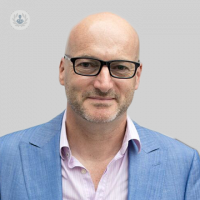A focus on cardiac arrhythmia
Written by:
Cardiac arrhythmia is a change in the heart’s rhythm. Normally the heartbeat is conducted with an impulse that starts in the top chambers of the heart and then in a very coordinated fashion, the impulse is then conducted down to the bottom chambers, the ventricles, which are the main pumping chambers. Anything that upsets that pattern of the heart’s pacemaker working and firing and sending impulses down to the bottom chambers results in the change in cardiac arrhythmia.

What causes cardiac arrhythmia?
A change in a slow heartbeat generally results from the heart’s own pacemaker not functioning properly, or the impulse is blocked in the chamber that conducts the impulse through from the top to the bottom chambers. On the other hand, the heart can suddenly beat too fast due to a short circuit in either the top or bottom chambers of the heart.
How is arrhythmia diagnosed?
It can be diagnosed in several ways. Usually the patient may complain of symptoms such as feeling their heart suddenly beating too fast or too slow. They may complain of feeling dizzy because their heart rate is too low and their blood pressure drops as a consequence. They may also feel faint, or actually faint and lose consciousness.
Aside from what the patient tells us, there are a number of simple tests that we can do to make the diagnosis. The most common is to do an ECG, which is to record the electrical activity of the heart by putting a series of electrodes on the outside of the chest wall and recording it. The ECG can determine whether the heart is in a normal rhythm or an abnormal rhythm very readily.
If we still can’t obtain a diagnosis, then we can introduce tiny electrodes through the vein at the top of the leg and pass those around to the heart and record the electrical signals directly from within the heart. From this procedure, we can work out whether the individual has an extra electrical connection or an irritable focus inside the heart that can make the heart suddenly speed up. Equally, we can also assess how the heart’s own pacemaker functions, and whether it is not functioning properly.
How is arrhythmia treated?
The treatment of heart arrhythmias depends largely on the underlying diagnosis. If it’s clear from the investigations that the heart is beating too slowly, then the best and indeed the only treatment is to implant a pacemaker.
If the heart is beating too quickly, then there are two main treatments available, which involve medication to try and slow the heartbeat. If the medicines are not successful in treating the faster heart rhythms, then a very good and alternative treatment is one called catheter ablation, which involves inserting electrodes through the vein at the top of the leg and cauterizing or freezing the abnormal pathway or irritable focus inside the heart in order to stop it being active.
For certain rhythms disorders, this is the treatment of choice, as it provides a very high success rate of treatment in the order of 95 to 99% success rate for a single procedure.
There are some dangerous heart rhythms and ones that we want to be absolutely sure that we’re treating correctively, because the patient is at risk of dying without the appropriate treatment.
These are mainly seen in patients who have had damaged hearts. They may have had previous heart attacks which have affected the heart muscle and so the heart muscle is not functioning properly. These patients are at risk of ventricular arrhythmias. These are rhythms coming from the main pumping chambers and at their worst, can lead to a cardiac arrest.
One important development in the treatment of arrhythmias has been the design of implantable devices called ICDs which offer life-saving therapy, as they’re able to shock the heart back to a normal rhythm. These devices have been shown to be life-saving under these circumstances. Thankfully, most rhythms are not life threatening, but for the few that are, then implantation of these devices is really lifesaving.
If you have a heart condition, or want to know more, make an appointment with a consultant cardiologist.


